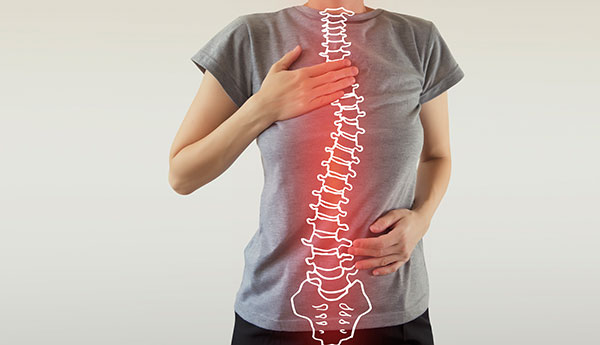
Many adults are surprised to find that their back pain, stiffness, or changes in posture could be signs of scoliosis. Although it is often associated with adolescence, scoliosis can persist into adulthood or develop later in life. As June is Scoliosis Awareness Month, let’s dive into what adult scoliosis looks like and how it can be managed effectively.
What Happens When Scoliosis Develops in Adulthood?
Adult scoliosis occurs when the spine curves sideways, creating an “S” or “C” shape rather than a straight line. Some adults carry scoliosis from childhood - often a result of adolescent idiopathic scoliosis - that gradually worsens over time. Others develop scoliosis later in life due to age-related wear and tear, a condition known as degenerative scoliosis. These spinal changes can place pressure on the joints, muscles, and nerves in the back, leading to symptoms that disrupt daily life.
Why Does It Hurt? Understanding the Causes and Symptoms
When scoliosis affects adults, it’s not just the curve that matters—it's how the spine responds. Common causes include disc degeneration, arthritis, osteoporosis, or spinal fractures. Symptoms can range from nagging lower back pain and muscle fatigue to more serious issues like nerve pain, tingling, or weakness in the legs. Some people notice uneven shoulders, hips, or a change in the way their clothes fit. Others may feel increasingly unsteady when walking or standing for long periods.
Getting the Right Diagnosis: What to Expect
If scoliosis is suspected, a thorough physical exam and review of your medical history must be done. Imaging tests such as X-rays, MRIs, or CT scans provide a closer look at the shape of the spine and help detect any nerve compression. Identifying the extent of the curve and its impact on nerves and muscles is crucial for creating a treatment plan that meets your unique needs.
What Can Be Done? Treatment Options for Adult Scoliosis
Treatment is tailored to how much the scoliosis is affecting your life. Many people benefit from nonsurgical options like physical therapy, which helps improve posture and strengthen the muscles supporting the spine. Medications and targeted injections can ease pain and inflammation. If scoliosis causes significant nerve problems or makes it difficult to perform daily activities, surgical options such as spinal fusion may be recommended to realign and stabilize the spine.
With proper care, many people find meaningful relief and maintain an active lifestyle. Early action is key-don’t wait until symptoms worsen to seek help. Book your appointment with us today.
AUTHOR: Dr. Payam Moazzaz is a board-certified orthopedic spine surgeon in California specializing in robotic-assisted minimally invasive spine surgery.


